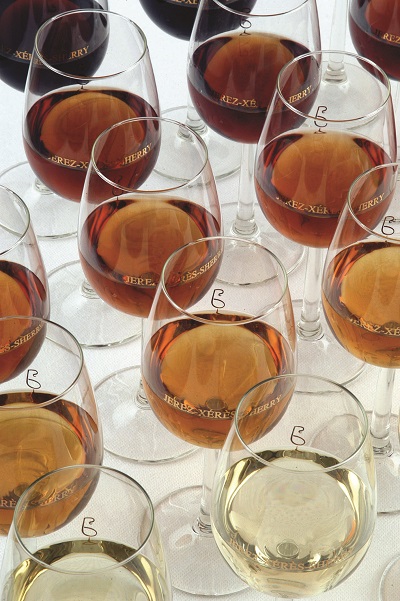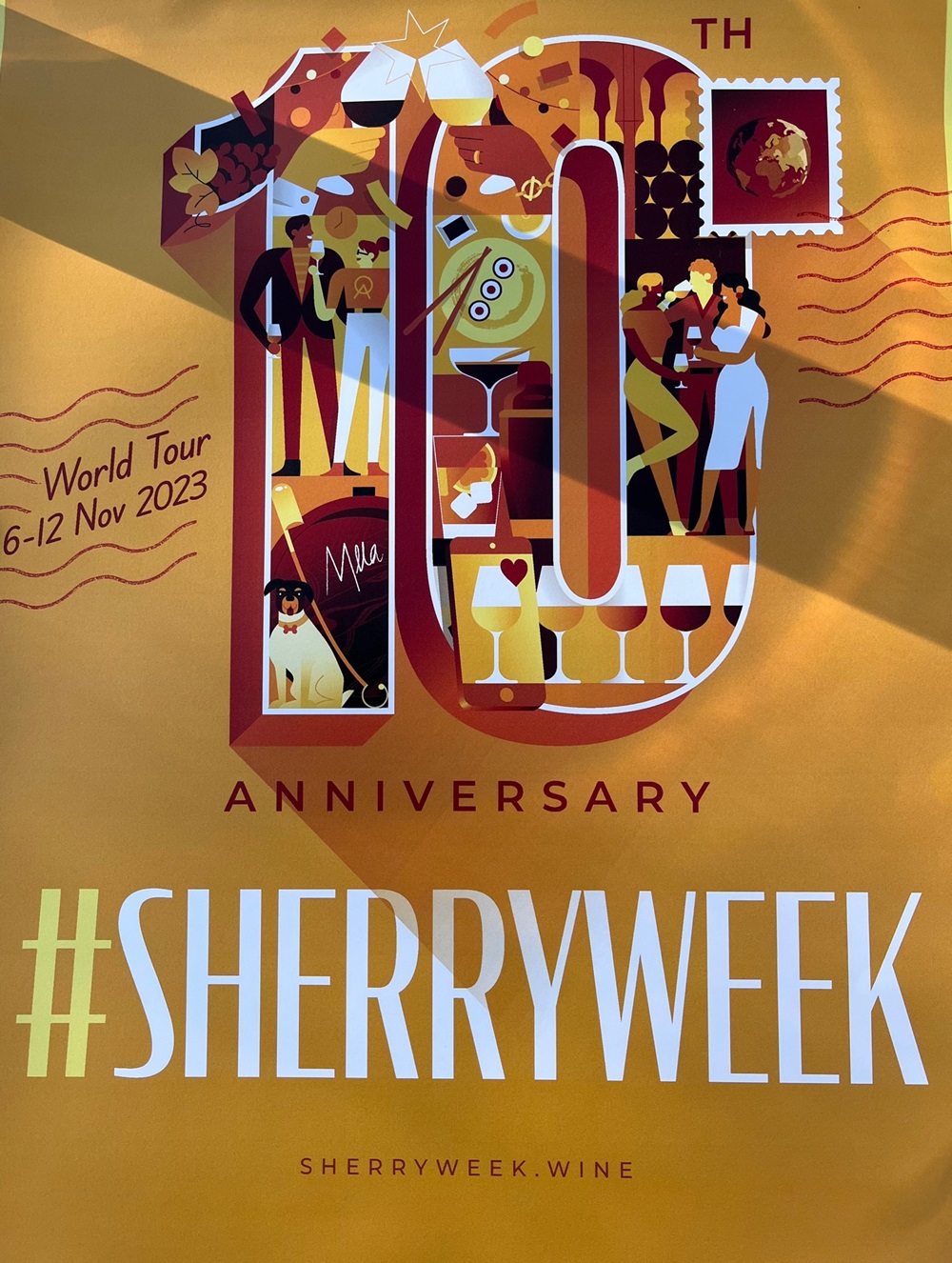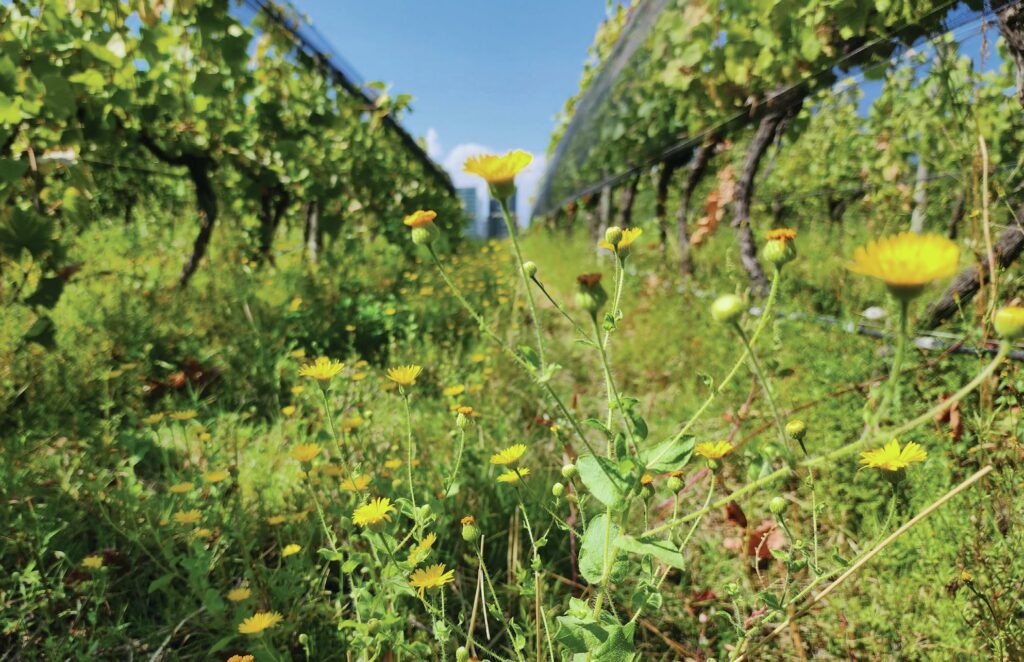PALO CORTADO

By Rose Murray Brown MW Published in The Scotsman 4 May 2019
It’s a misfit in the sherry world, but is gaining a great following amongst Sherry lovers. ‘Palo Cortado’ is one of the more mysterious styles of sherry, but at its best can be one of the wine world’s greatest bargains.
You might well have heard of Fino, Amontillado and Oloroso. Palo Cortado is less well known as it is still a relatively obscure type of sherry, known since mid C19. In simple terms, it is like a lighter form of Oloroso.
So what does it look and taste like? A Palo Cortado sherry actually looks like a light version of Oloroso with its bright mahogany colour. However its nose is a little more reminiscent of Amontillado with delicate pungent crispness. On the palate it has the richness, depth and intensity of Oloroso.
In comparison to Fino and Manzanilla, Palo Cortados are higher in alcohol as they are fortified up to Oloroso level at 17%-22% – and true Palo Cortados are also usually very dry.
So where does the name come from? It is believed to come from the ‘cut stick’ mark which is made on the cask when this style of wine is discovered. In the past Palo Cortado was basically a wine which started out as a sherry earmarked to be a Fino, but when the ‘flor’ yeast (the special sherry yeast crucial to the Fino style) died away it was rejected as a Fino. So Palo Cortado actually spent far less time than Amontillado under flor – at least in ‘the old days’ that is the way it was made.
Those casks intended for Palo Cortado were then removed from the Fino solera, fortified and allowed to gain character from oxidative ageing with alcohol, glycerol, colour, flavour and sugars deepening with maturation – so they end up much nuttier and more textured than Amontillado, but not quite as densely textured as Oloroso.
The reason why Palo Cortado historically was quite rare, was because the ‘solera’, the fractitional blending system used in sherry making, is difficult to operate for this style as it has a tendency to generate into Oloroso.
However – it appears that today Palo Cortado is not quite the accident of nature we were all led to believe. Some Palo Cortados apparently actually start as Olorosos, but develop lighter characteristics. Winemakers in the bodegas are now more adept at nosing out potential Palo Cortados. They also know that if they age potential Palo Cortados in casks (American 600 litre oak barrels) which previously contained a Palo Cortado – they will end up with this style.
So there is now an increasing availability of this style being actively nurtured by winemakers, not quite the freaks of nature of old.
The good news for sherry aficionados is that there are no big brand Palo Cortados to dilute this style category (although do beware if you find a very cheap Palo Cortado as it will just be a blend of Amontillado and Oloroso).
In our tasting, we sampled different aged Palo Cortado from a range of bodegas. The conclusion was that this style can be fantastic value considering their age – but it really only appeals to those who love dry styles. If you are looking for something sweeter, head to rich sweetened Olorosos.
What to serve with these deliciously nutty dry Palo Cortado? They make unusual aperitifs or match alongside a spring charcuterie platter of Iberico lomo, salchichon, spicy or even mild blue cheese. Palo Cortados should be served warmer than Fino or Manzanilla at 12-14 degrees C – and they can, like Oloroso, last weeks or even months after opening the bottle.
PALO CORTADO TORRE DE ORO Bodegas Lustau (19%)
(£11.99 for 75cl bt Waitrose)
Typical light mahogany in colour with smoky zesty notes, initially dry but hints of nutty sweetness on the palate. Made by renowned house of Lustau – this would make a good gentle introduction to the dry Palo Cortado style
PALO CORTADO SOLERA CAYETANO DEL PINO Bodegas Sanchez Romate (20%) ***GREAT VALUE***
(£15.50 for 75cl bt The Wine Society www.thewinesociety.com)
Lovely combo of vibrant freshness and rich texture. Our tasters loved the enticing toffee honeyed aromas and rich nutty complexity (and the pretty label). Bone dry, but not as searingly dry as some we tasted. Sleek elegant and attractive on the palate. Selected from a family-owned sherry stockholder (known as an almacenista) in this case Cayetano del Pino and is about 15 years in age.
APOSTOLES PALO CORTADO Bodegas Gonzalez Byass (20%)
(£19.99 for 75cl bt Waitrose)
Slightly sweet as it is a blend of Palo Cortado (87%) with sweet rich Pedro Ximenez. For those who like raisiny sweetness this aged blend alongside minerally zesty citric notes. Quite spicy, dark chocolate flavours – it would suit those who like a touch of sweetness in their sherry. Quite a good match with chocolate too.
ANTIQUE PALO CORTADO Bodegas Fernando de Castilla (20%) ***STAR BUY***
(£36 for 50cl bt Woodwinters, Edinburgh, Inverness & Bridge of Allan)
From small independent Fernardo de Castilla, revitalized by Norwegian Jan Petterson who worked at Osbourne. Superb unblended untreated Palo Cortado averaging over 30 yrs. Originates from old vines in Balbaina vineyard and matured in just one solera system. Hints of caramel, orange, nuts with salty hints, honeyed, gingery, nutty palate with a toffee finish. Elegant, delicate, vibrant – but not too dry.
GREAT DUKE PALO CORTADO 12 YEARS Bodegas Juan Pinero (18%)
(£26.99 for 75cl bt Raeburn Wines, Edinburgh)
The leanest and most austere of Palo Cortados in our tasting. Very subtle citric nose with hints of nuts and chocolate, sharp pronounced acidity on the palate making it extremely dry to taste – it reminded me more of Amontillado in style. It comes from La Callejuela, a relatively new bodegas founded in 1980 at Sanlucar on the coast – hence this wine’s salty tang.
PALO CORTADO 30 YR OLD VORS Bodegas Lustau (21%) ***STAR BUY***
(£65 for 50cl bt Berry Bros & Rudd www.bbr.com)
Made from the best casks in the limited centenary solera of Don Rafael founded in 1920s, a fabulous dense rich plummy style of Palo Cortado. Dry, but with such rich mouthfilling nutty intensity with hazelnut and dark chocolate notes.
Join Rose’s Hidden Gems of Italy & Italian Charcuterie tasting: June 20 Edinburgh £45 www.rosemurraybrown.com
wine tastings
The perfect gift for the wine enthusiast in the family. Rose does In-person tastings too.
cellar advice
Rose does cellar valuations for private clients, valuations for insurers & bespoke portfolio management.
Related stories
November 11, 2023
To celebrate International Sherry week (6-12 November 2023) and the renaissance of this exciting historic wine, I have picked my favourite dozen from the range of styles: DIATOMISTS MANZANILLA, MIRAFLORES BAJA (15%) £12.95-£14.95 hf bt Cockburns of Leith, Edinburgh; Cork & Cask, Edinburgh; Aitken Wines, Dundee; St Andrews Wine; Inverurie Whisky Shop Diatomists is a new brand name in the
October 10, 2023
To celebrate Organic September, I have picked a dozen wines from around the world made from grapes grown without synthetic pesticides or fertilisers. All under £20 per bottle, it proves that organic does not necessarily mean expensive – and there are some great organic wine bargains to be found. SPARKLING WINE Veneto, N Italy: CERADELLO ORGANIC PROSECCO
July 16, 2023
Scotsman James Busby, the C19 viticulturist and pioneer, is renowned as ‘the father of Australian viticulture’. What is less well known is that he also visited Jerez in southern Spain in 1831 and wrote extensively about his experiences meeting sherry legends like Pedro Domecq. Nearly two centuries on, Edinburgh-born Busby’s old C19 journals have proved the inspiration for modern



